#late 19th century
Text

Eleuterio Pagliano (1826-1903)
"Geography Lessons" (1880)
Oil on canvas
#paintings#art#artwork#genre painting#genre scene#eleuterio pagliano#oil on canvas#fine art#italian artist#history painting#costume#costumes#1880s#late 1800s#late 19th century
76 notes
·
View notes
Text
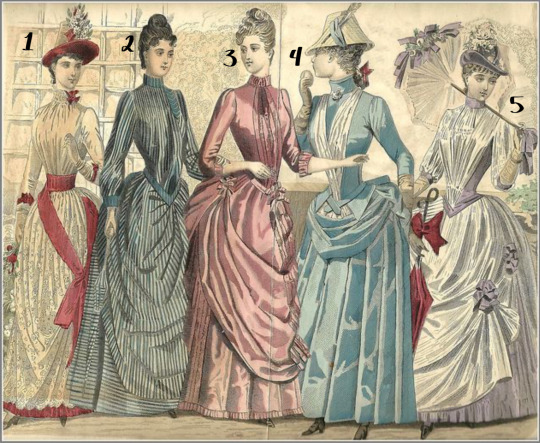
submitted by @downtonbaddie7 💙🩷
#historical fashion poll submission#historical fashion polls#fashion poll#historical dress#historical fashion#dress history#fashion history#fashion plate#19th century#19th century fashion#19th century dress#late 19th century#1880s fashion#1880s dress#circa 1880#1880s#circa 1888#1888
66 notes
·
View notes
Text
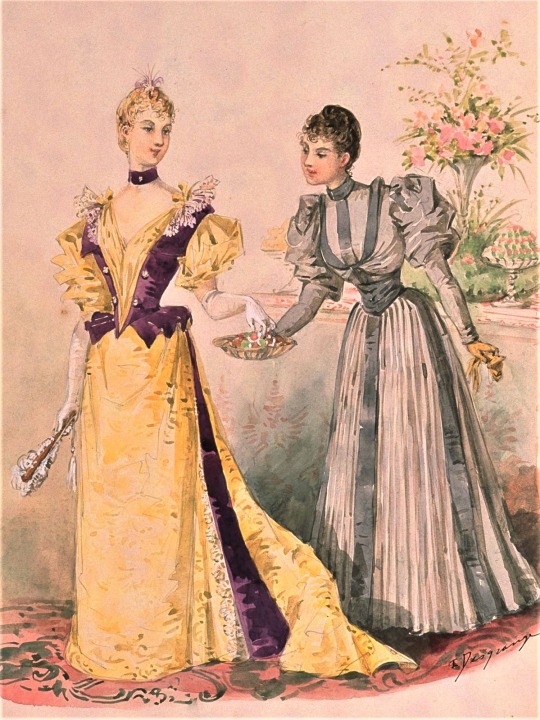
Le Mode Illustree 1894
#fashion plate#histocial magazine#fashion magazine#historical fashion#fashion#historical#history#historical clothing#historical dress#long dress#textiles#victorian#victorian era#1800s dress#1800s art#1800s fashion#19th century fashion#19th century#late 19th century#1890s dress#1890s fashion#high fashion#gown#old fashioned#victorian clothing#fashion dress#the gilded age
34 notes
·
View notes
Text


Clement Massier
Beetle lustre vase, circa 1900
Ceramic, lustre glazed vase
Bonham's
9K notes
·
View notes
Text
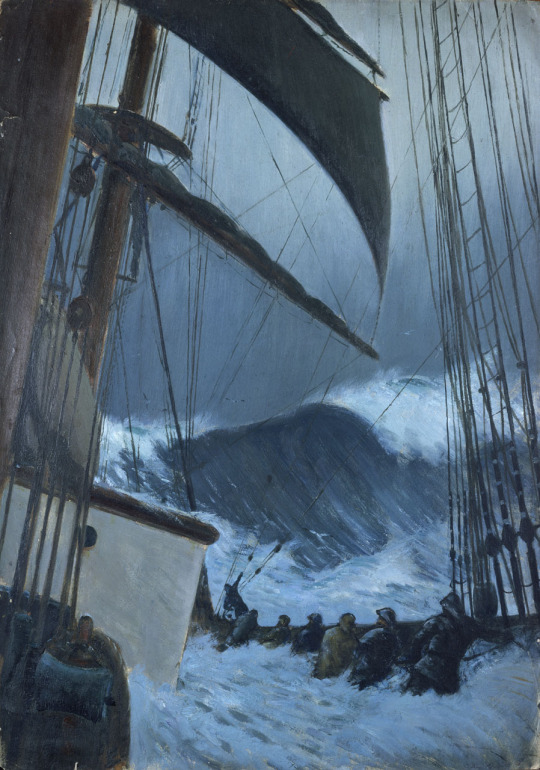
The deck of the 'Birkdale' in a storm, by John Everett, 1920
1K notes
·
View notes
Text
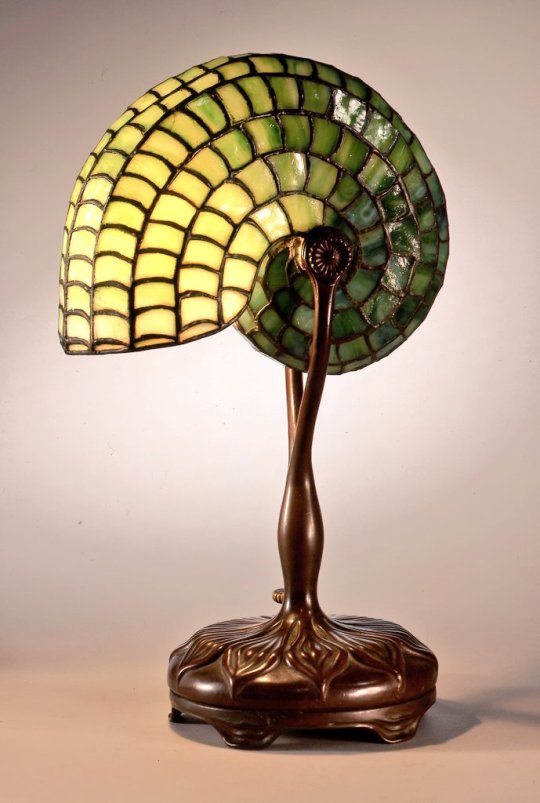
This reading lamp is 123 yrs old, Original Lamp by Tiffany Studios, 1899, New York, USA.
Officially they are known as "Nautilus Tiffany lamps". Various versions were made between 1899 and c. 1912. Expect to pay at least $55,000 for an original Nautilus lamp.
#dark academia#light academia#academia aesthetic#classical#academia#escapism#classic literature#books#books and libraries#architecture#reading#royal core#cottage core#aesthetics#Tiffany#art nouveau#nautilus lamp#late 1800s#early 1900s#late 19th century#early 20th century
9K notes
·
View notes
Text

#I JUST LOGGED ON FOR THE FIRST TIME IN MONTHS YALL WHAT IS HAPPENIN????#vanilla extract#polls#vanilla poll#tumblr polls#meme#internet culture#im too fucking old and im only 24#tumblr lore#rabbit hole#late 19th century#vanilla#help im confused#queer#nightmare before christmas#jack skellington
5K notes
·
View notes
Text

Fireman's Coat
Late 19th Century to Early 20th Century
Japan
Japanese firemen's coats are reversible. When fighting fires, the coat was worn as shown, together with close-fitting trousers, a hood, and gloves. Saturated with water, these garments gave protection against flames. A bold, legible pattern on the back identified the fireman’s brigade. For festive occasions, the pictorial side faced outward. This coat shows the Toad Spirit offering to teach the robber Jiraya magic, provided he used it only to benefit humanity.
Denver Art Museum (Accession Number: 1999.265)
#coat#outerwear#fashion history#historical fashion#non western fashion#japanese fashion#late 19th century#early 20th century#turn of the century#1880s#1890s#1900s#1910s#denver art museum
1K notes
·
View notes
Text

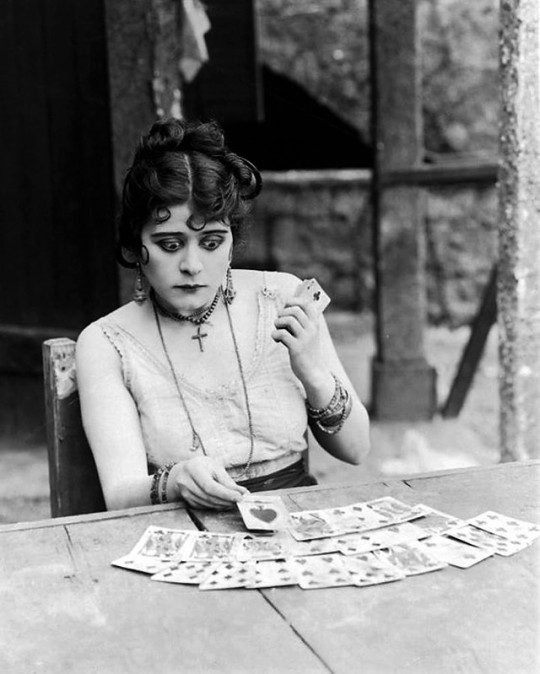

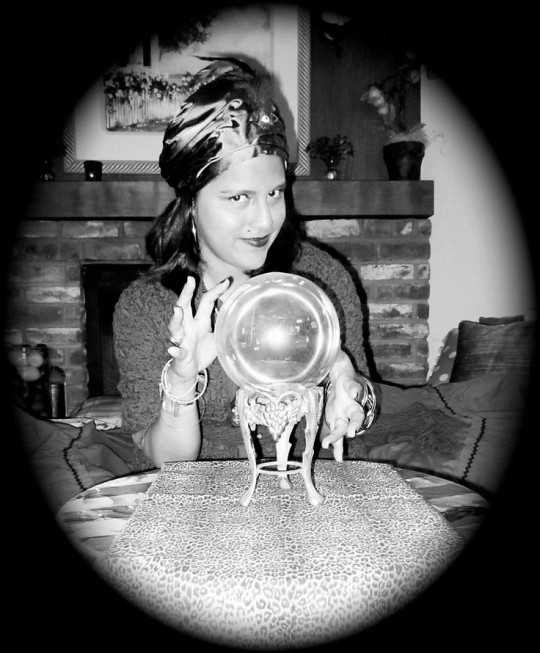
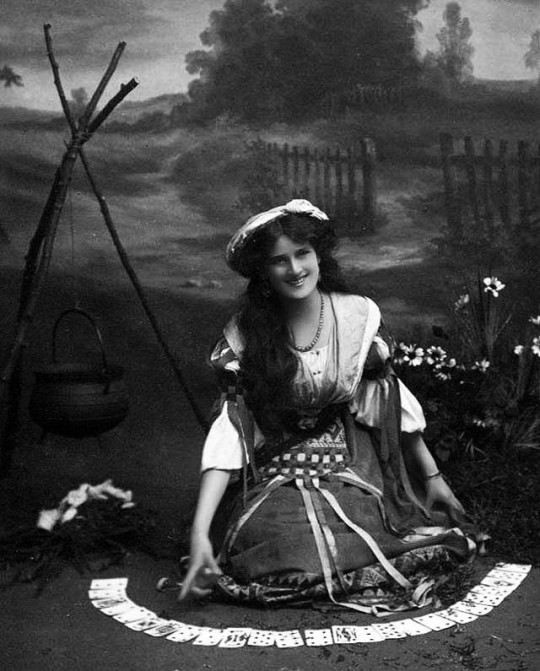




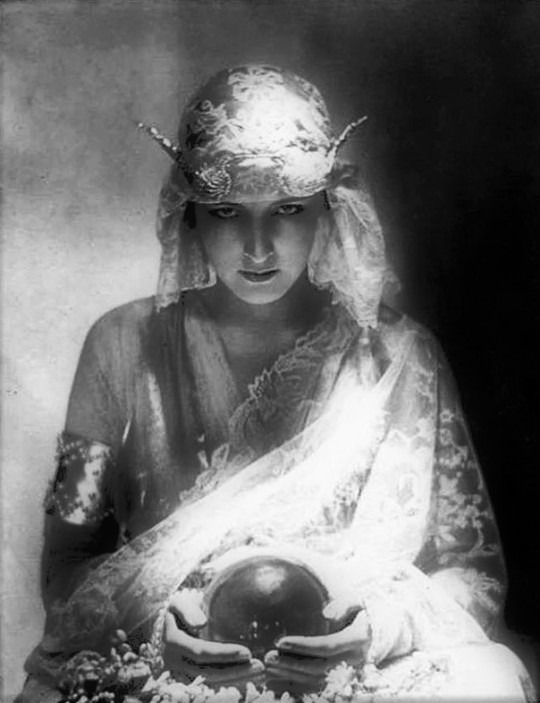

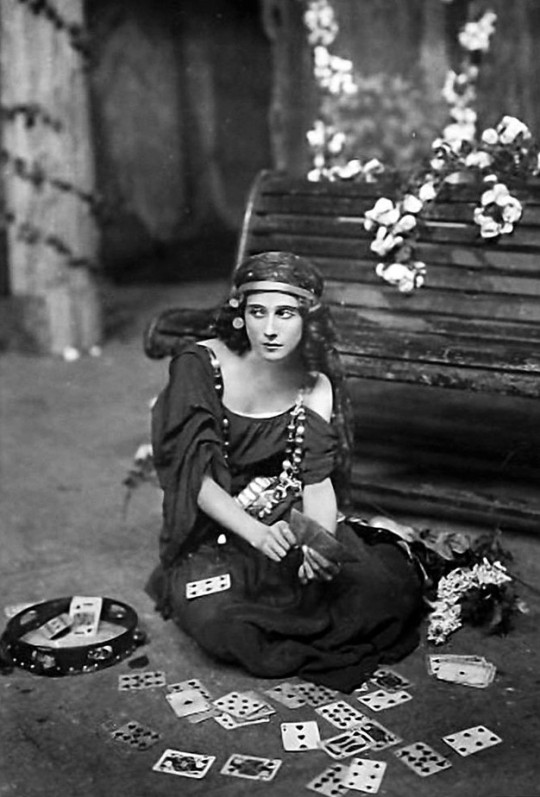
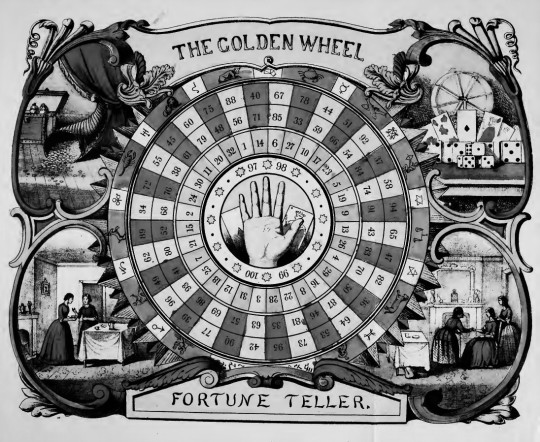
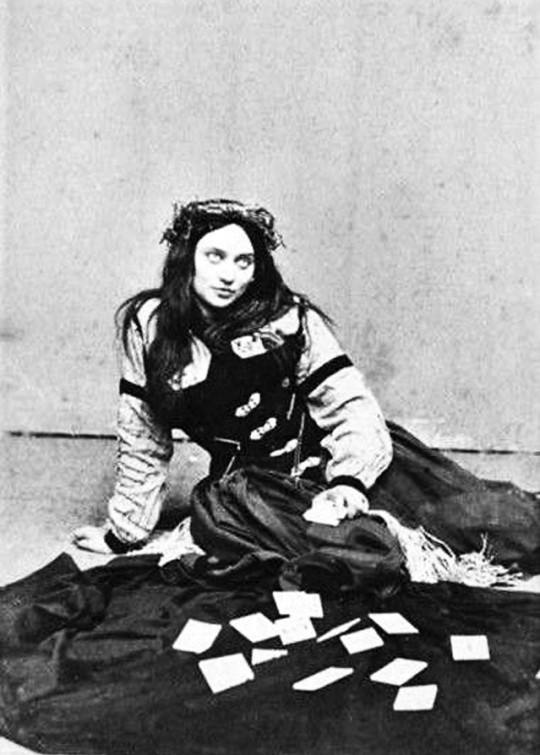
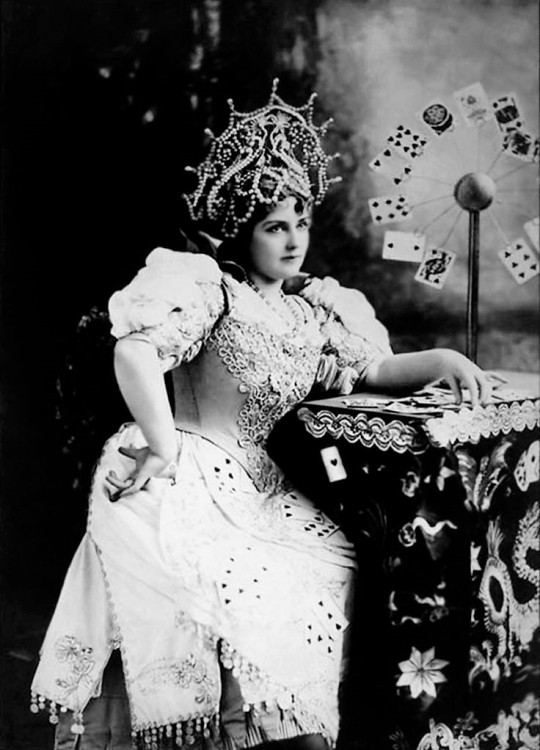
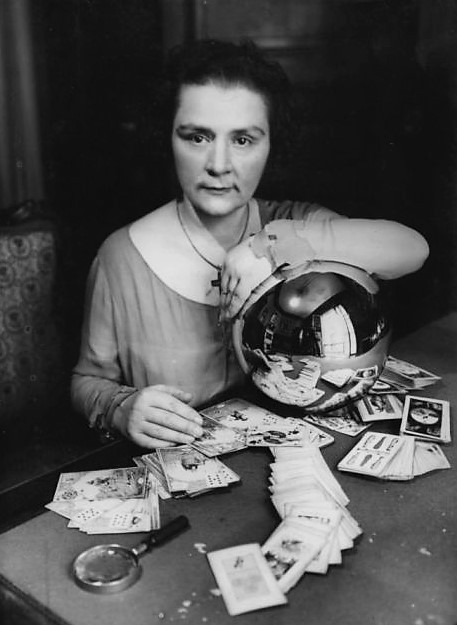
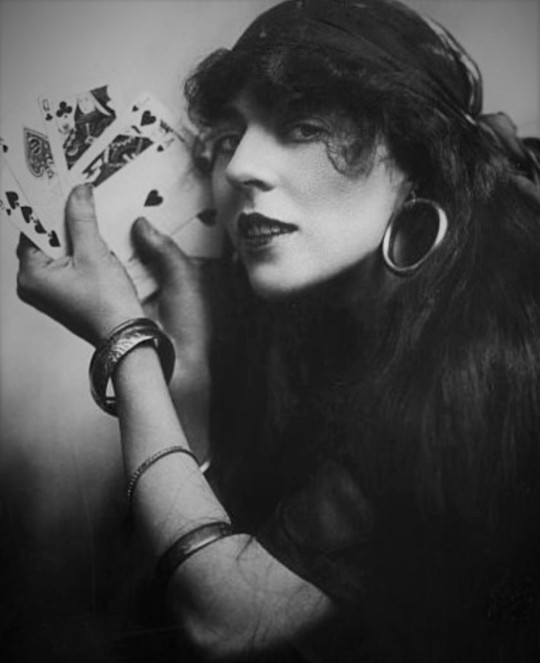
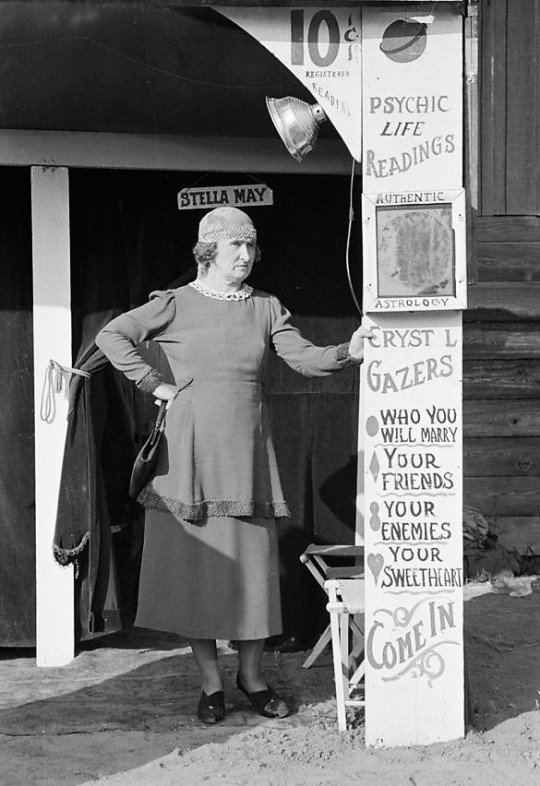
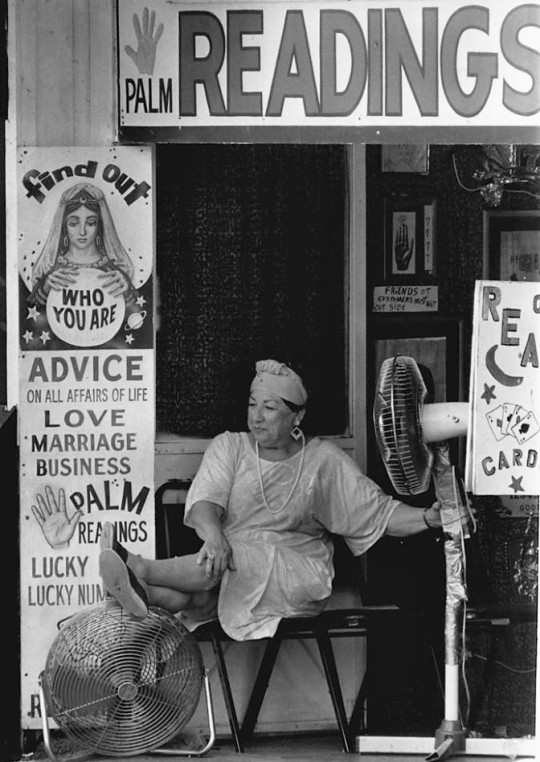

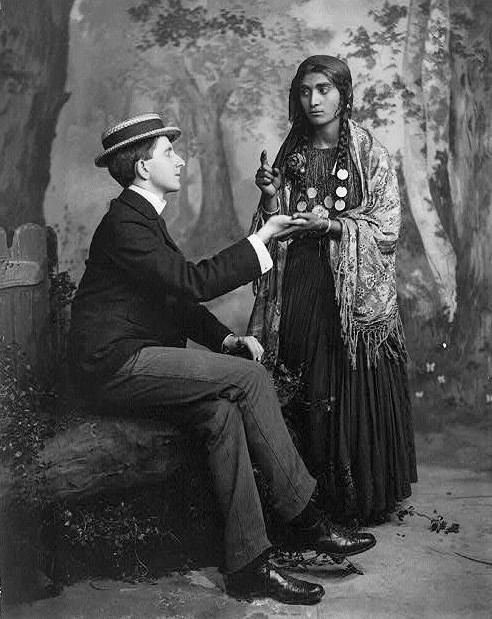

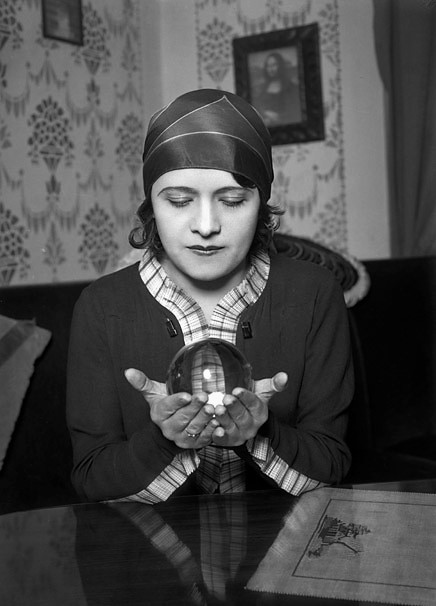
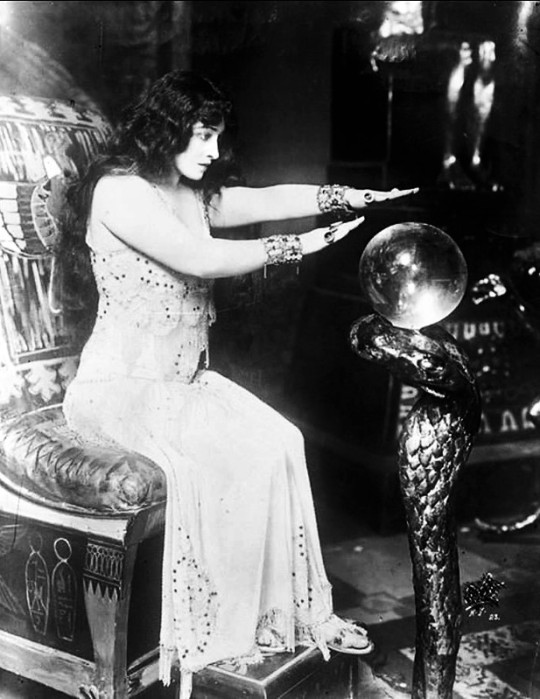
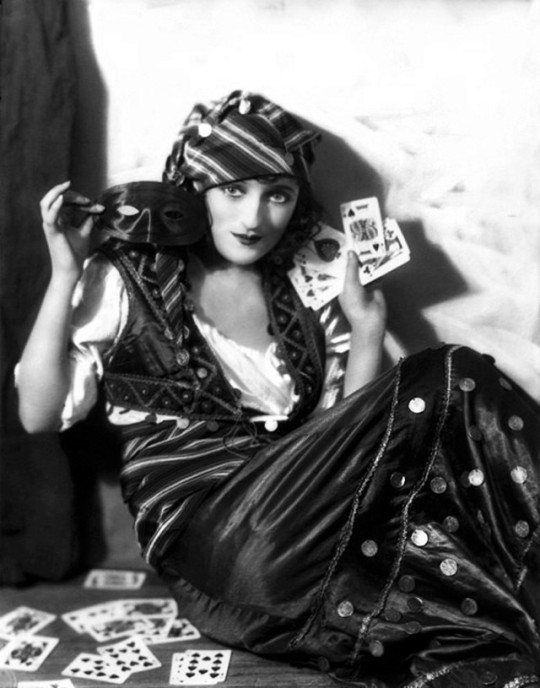
Fortune Tellers
#fortune tellers#clairvoyant#cartomancer#crystal ball#palm reading#fortune-telling#divination#tarot reading#spiritualism#occultism#nelly muley#silent films era#theda bara#florence lee#late 19th century#early 20th century
653 notes
·
View notes
Text
Etiquette of the Edwardian Era and La Belle Époque: How to Dress
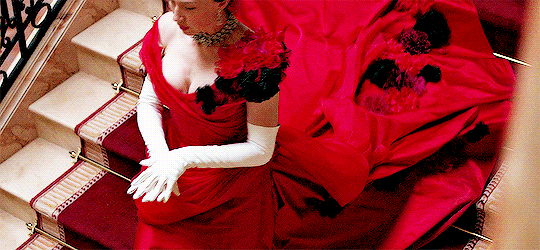
This is a new set of posts focusing on the period of time stretching from the late 19th century to the early 20th Century right up to the start of WWI.
I'll be going through different aspects of life. This series can be linked to my Great House series as well as my Season post and Debutant post.
Today will be focusing on the rules of clothes with this time period.
A Cut for Every Occasion
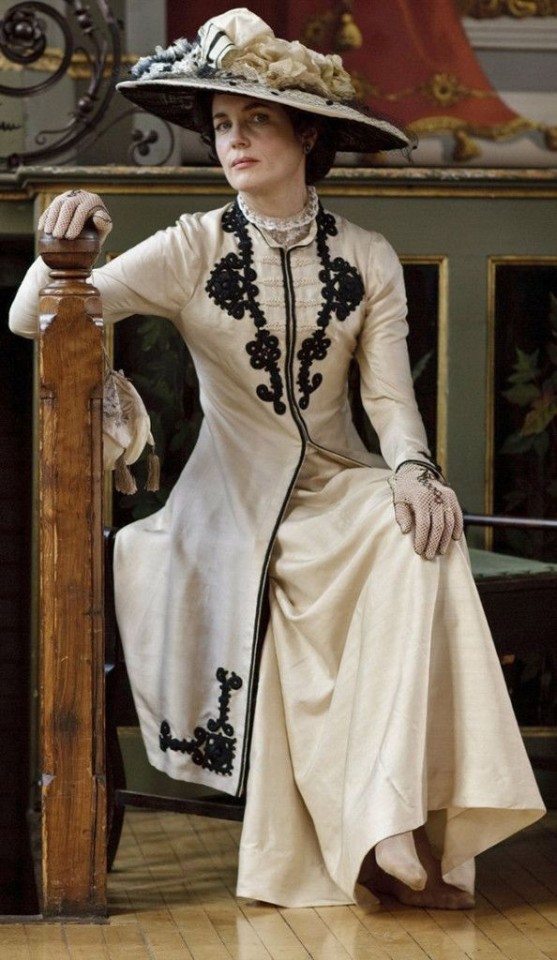
As you may know, the wealthy elite and their servants lived extremely regimented lives and every aspect was governed by careful rules. They would be expected to wear the right outfit at the right time, every minute of the day. Any misstep would be noticed at once and be subject to scruntiny.
In the circles of the elite, one would be expected to change for every occasion. One simply wouldn't wear the same outfit they've been lying around the house in to attend tea at somebody's house. Fashion in this era was dictated by the clock and by the event diary of the wearer.
Ladies

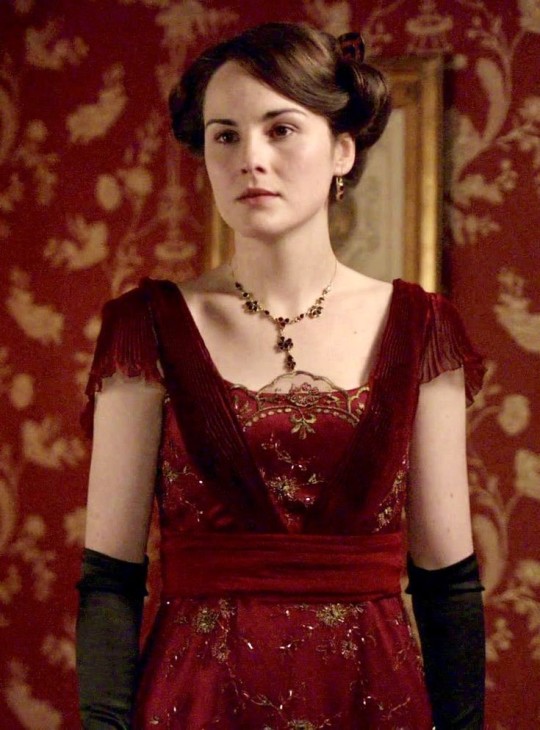
Women of the upperclass would be expected to change at least six times a day. When she would rise for a morning of repose around the house, she would simply wear a house gown or a simple blouse and skirt. If planning a morning stroll, she would change into a walking suit which is a combination of blouse, skirt and jacket along with her hat usually of tweed. If running errands or paying a visit to friends, she would wear another walking suit. If riding, she would wear a riding habit and a hat. If hosting tea or taking tea in her own home, she would change into a tea gown with is a lighter more airier gown more comfortable for chilling in. If attending a garden party, one wears a pastel or white formal day gown accompanied by a straw hat and gloves. For dinner, she would change into an evening gown which would be more elaborate and show off a little more skin than her day wear. After dinner and ready for bed, she would change into her nightgown.
Female servants had an easier time of it. A housekeeper and lady's maid would simply wear a solid black gown for the entire day. A cook and kitchen maids would wear a simple day dress for working with an apron. Housemaids would usually wear a print dress with an apron and cap, changing into the more formal black and white attire you would associate with a maid.
Gentlemen

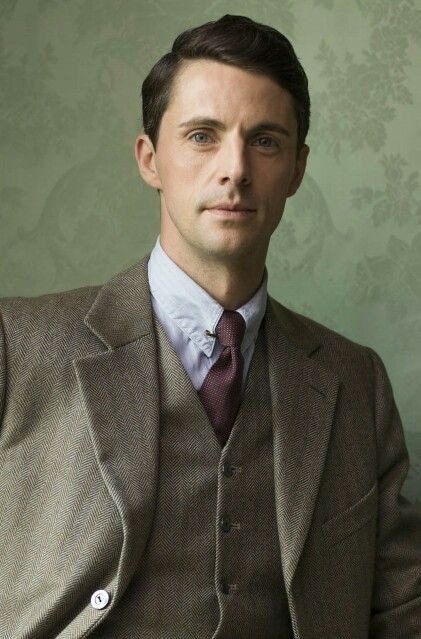
The gentlemen had an easier time but they too were subject to changes throughout the day. Men were expected to wear a suit. The most popular day time suit was a sack suit. These were comprised of plain and loose fitting jackets, worn over a starched shirt with a high collar, waistcoat and straight trousers with ironed creases. These suits were exclusively wool with cheaper ones made of a wool and cotton blend. Grey, green, brown, navy were usual but sine younger men preferred louder colours such as purple which was a trend for a time in the 1910s. These suits were worn about the house or in the city accompanied by a coat. Men would change into tweed if shooting or walking. For garden parties, a gentleman would wear a light coloured suit, usually white and a straw hat. For dinner, a man had two choices: his tails or his dinner jacket. A dinner jacket was for less formal suppers say if dining at home. This was a collection of a jacket, trousers, waistcoat, a bow tie, a detachable wing-collar shirt and black shoes. Lapels of these jackets were edged with silk or satin. Tails were worn at a formal dinner party, at White Tie events. This was made up of a tailcoat, white piqué waistcoat, a starched dress shirt with a pique bib and standing wing collar with a white bow tie. Trousers were lined with trim to hide the seams.
Male servants were soared changing. Footmen would wear their livery around the clock which would resemble white tie to a certain extent or mimic court dress of palace servants. Butler's would wear a variation of a gentleman's evening suit throughout the day. When a male servant is dressed, he usually stays that way. However, a valet or a footman may be taken to pick up during shooting parties where they would wear tweed walking suits.
Jewellery
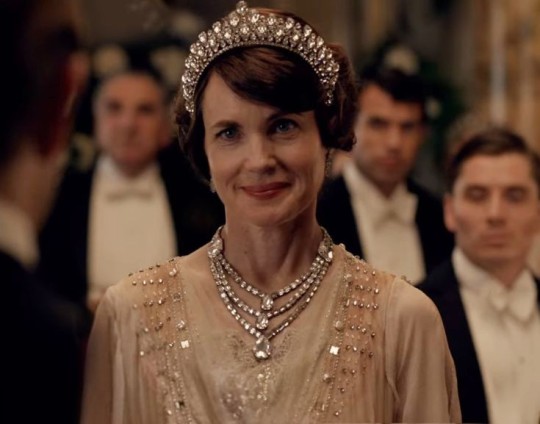
Jewellery was an important sign of status in society. Upperclass women of this time has access to untold caches of sparklers but there were rules concerning their use and meaning. Earrings were usually clip ons as women of high status would not pierce their ears. Simple, understated earrings were worn during the day with more ostentatious sets were worn in the evening time. Broaches were popular at this time, usually worn at the throat of a gown or blouse or walking suit or affixed on hats. Large stoned rings were worn over gloves while slender bands were worn under. Jewellery was intricate and understated amongst old money whole the nouveau riche went for chunkier stones and larger settings. Tiaras were only worn at White Tie events, held after six pm and almost never by unmarried girls. One would not wear a larger tiara than that most senior lady present. Men would wear tie pins, cufflinks and pocket watches to match any occasion be it for a jaunt on the town or at a formal evening party.
Hats
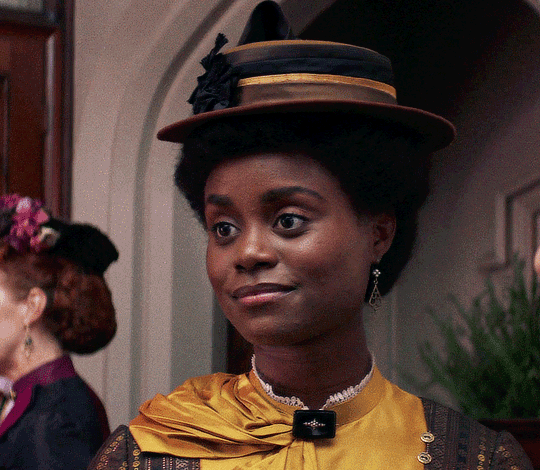
Hats were a staple in this period. Anybody respectable from any class wouldn't venture out of the door without a hat.
Men would wear hats when heading out but always remove them when entering a building, and never wear one without removing it for the presence of a lady. The bowler was seen as more a servant's headwear while a top hat was reserved for gentlemen. Flat caps would be only seen on gentlemen at shooting gatherings or in the country, they were popular among the common class for any informal occasion.
Women had more stricter rules concern hats. Hats for women were more a day accessory worn while out and about. A woman would not wear a hat in her own home even when entertaining and nor would any of the other female occupants if joining the gathering. A woman would not remove her hat when attending a luncheon or tea or any activity. Hats were held in place by a ribbon or sash tied under the chin or by a hat pin, which is essentially a large needle thrust through the hair. This was the period where women's hats became more ornate and rather large, leading to some critisism. Among servants, housekeepers and lady's maids would not wear a hat while indoors and working but a housemaid or cook or kitchen maid would cover their hair with a cap with housemaids changing into a more elaborate one come evening time. Male servants would not wear hats unless travelling or outdoors.
Gloves

Gloves are a staple in this period and worn only at the opportune time. Among servants, only footmen would wear gloves and usually only when serving. Butlers would never wear gloves. Female servants did not wear gloves.
Men did wear gloves, usually woollen or leather while outside or riding gloves when out on horseback.
Women wore gloves whenever outside. Day gloves were usually wrist length, with evening gloves stretching to the elbow. During dinner, evening gloves would be removed at the first course and laid across the lap, replaced at the last course when the ladies leave for tea and coffee after where the gloves are then removed again. Gloves are always worn when dancing and at the theatre or opera. If one is sitting in ones box and sampling some chocolate, one can remove their gloves for that.
Hair and Makeup
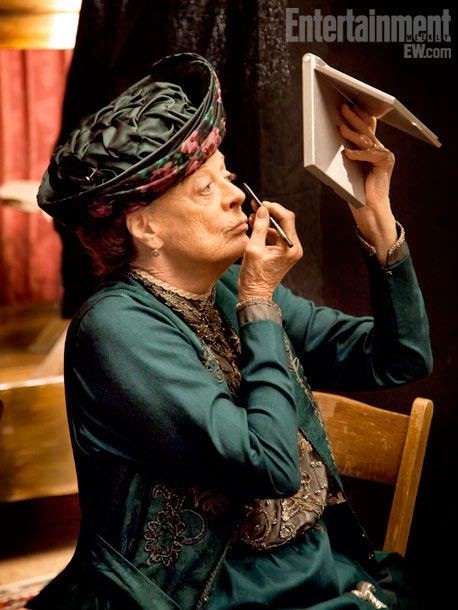
Make up was a no-no amongst the upper crust and for their servants in England and America, as it was seen as licentious but in France, the use of rouge was accepted. Perfume and cologne were acceptable but excessive use was frowned upon.
Hair was dressed by one's lady's maid. Bouffant updos were popular in this time period for married women. During the last years of this period, women began adopting the 'bob' but this was seen as radical and sometimes scandalous. Unmarried girls could wear their hair down, often with accessories like a bow to adorn their tresses. Servants would always tie up their hair and never be seen with it down or uncovered (though this depended on their job).
Men would comb their hair, slicking it back for dinner. Most men were clean shaven but if they wore beards, they were usually well groomed. Hair was kept short for grown men and teenagers but young boys may wear their hair longer whilst in the nursery.
#This bitch loooonnnnggg#Etiquette of the Edwardian Era and La Belle Époque series#Fantasy Guide#Early 20th Century#late 19th century#Great houses#writing#writeblr#writing resources#writing reference#writing advice#ask answered questions#writing advice writing resources#writers#Writing advice writing references#Writing references#Historical fiction#1900s#1890s#Fashion
574 notes
·
View notes
Text
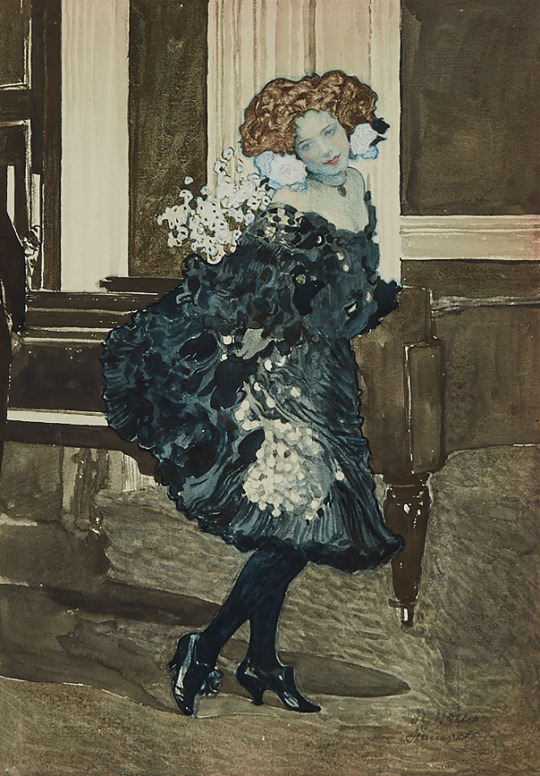
"Dancing girl" by Sigmund Walter Hampel (1868-1949)
#austria#19th c. austria#20th c. austria#Sigmund Walter Hampel#mdp19th c.#mdp20th c.#early 20th century#late 19th century#undated#19th century#20th century
350 notes
·
View notes
Text
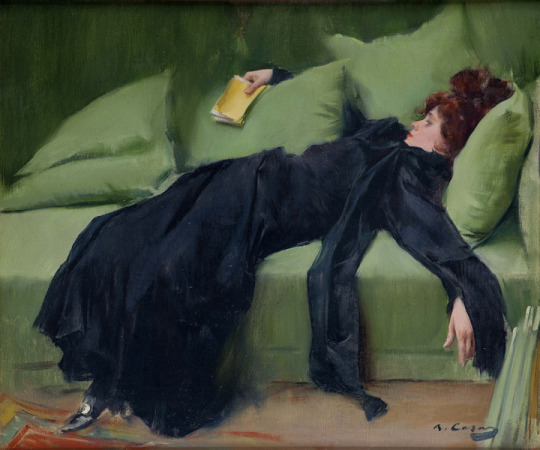
Ramon Casas (1866-1932)
"A Decadent Girl" (1899)
Located in the Museum of Montserrat, Barcelona, Spain
#paintings#art#artwork#genre painting#female portrait#ramon casas#fine art#museum of montserrat#museum#art gallery#catalan artist#genre scene#portrait of a girl#portrait of a woman#side profile#black dress#dresses#clothing#clothes#green#decadent movement#1890s#late 1800s#late 19th century#a queue work of art#1k#2k
2K notes
·
View notes
Text
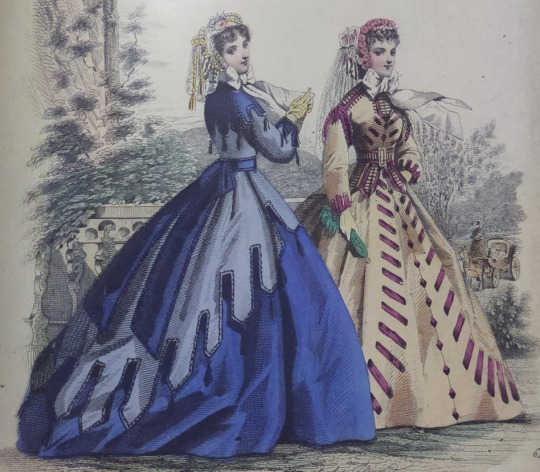
submitted by @myhouseisalibrary 🩵💛
#historical fashion poll submission#historical fashion polls#fashion poll#historical dress#historical fashion#dress history#fashion history#fashion plate#19th century#19th century fashion#19th century dress#mid 19th century#late 19th century#circa 1860#1860s fashion#1860s dress#1860s#circa 1865#1865
66 notes
·
View notes
Text

Le Mode Illustree 1894
#historical fashion#fashion#historical#history#historical clothing#historical dress#long dress#textiles#victorian#victorian era#victorian pattern#old fashioned#fashion plate#histocial magazine#fashion magazine#1890s dress#1890s art#1890s fashion#1800s dress#1800s fashion#19th century fashion#late 19th century#19th century#dress#dresses#gown#victorian clothing#victorian history#victorian dress#the gilded age
22 notes
·
View notes
Text

Circle of Thomas Eakins, Three Male Nude Models Supporting a Reclining Fourth Model, from The Grafly Album, 1886, albumen print.
Clark Art Institute
251 notes
·
View notes
Text

The Captain's Wife, by Carl Sundt-Hansen, 1895
1K notes
·
View notes